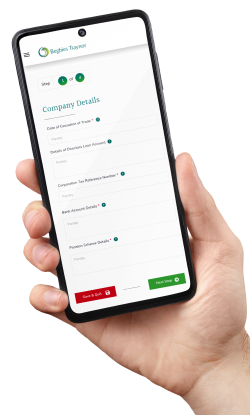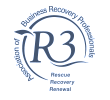If you have made the decision that you would like to close your company and walk away, whether that is due to mounting financial pressures, falling trade, retirement, relocation, or simply a desire to move on to a new venture, there are a number of ways this can be achieved.
The main factor behind which procedure you can use to close your company depends on a number of factors, namely the financial position your company is in at the time of closure.
If your company is solvent, you can choose either voluntarily strike‐off your company using form DS01, or alternatively place your company into a formal liquidation process known as a Members' Voluntary Liquidation (MVL) in order to extract the profits tied up within.
If you company is insolvent, however, you will need to arrange to have the company liquidated so that its debts can be dealt with appropriately. This can be achieved through a director-initiated process known as a Creditors' Voluntary Liquidation (CVL).
Concerned about the National Insurance increase?
For the 2024-25 tax year, the rate of employer National Insurance increases from 13.8% to 15% adding yet more pressure onto already squeezed cash flows. If you are worried about the impact this could have on your company’s finances, talk to the experts at UK Liquidators. As licensed insolvency practitioners we can explain your options and help you plot a way forward. Call today on 0800 063 9262.
In some instances a solvent company can be closed by applying to Companies House and asking for it to be struck off the register. Strike off can be a cost-effective option for those companies with no - or minimal - assets who want to bring an end to an unwanted business. This is often done for companies which were set up but never actually traded. By striking off a company you remove the administrative burden associated with being the director of a non-trading company.
An alternative to strike off is a Members’ Voluntary Liquidation (MVL).
A Members' Voluntary Liquidation is a formal process that must be administered by a licensed insolvency practitioner. MVLs can be a great option for those companies with a significant amount of assets to distribute to shareholders.
Not only does closing a company through a formal process help to ensure that it is wound down in an orderly manner and in accordance with the Insolvency Act 1986, a further benefit of Members’ Voluntary Liquidation is its tax‐efficiency.
This is because distributions taken via an MVL are treated as capital rather than income, and taxed accordingly. The rate of Capital Gains Tax payable can be further reduced by claiming Business Asset Disposal Relief (formerly known as Entrepreneurs’ Relief). Business Asset Disposal Relief will lower the CGT rate levied down to just 10%, allowing you and your fellow shareholders to walk away from the business with maximised returns.
UK Liquidators are MVL specialists and have extensive experience of helping directors close down their business in this tax‐efficient way.
Liquidation Portal
For Company Directors

You and other directors must formally declare that the business is solvent. A meeting of shareholders is then arranged to pass a resolution that the company will enter Members’ Voluntary Liquidation.
Company assets are realised by the liquidator, all creditors are paid, and remaining sums distributed amongst members. The company name is then removed from the register at Companies House.
But what happens if your company is insolvent ‐ can you still walk away?
Although your company has debts that it cannot afford to repay, you can still close it down and walk away as long as you’ve acted within the law and aren’t found to be responsible for its decline through misconduct or fraud.
In brief, when a company is insolvent it means:
Upon their company becoming insolvent, directors must cease trading and seek professional assistance from a licensed insolvency practitioner. When it comes to closing an insolvent company, a formal liquidation process known as Creditors’ Voluntary Liquidation (CVL) is the best option as it enables directors to fulfil their legal duties and protect creditor interests.
Start your online liquidation today
If you have decided liquidation is the right option for your limited company, you can take the first step and begin the process online using our online portal. Starting the process is quick, simple, and can be done at a time that suits you. Your information will be submitted to your local UK Liquidators insolvency practitioner who will be with you every step of the way. Click here to start your company’s liquidation online.
As part of the CVL process, a licensed insolvency practitioner will be appointed to take control of the company and administer its orderly winding down.
Outstanding creditors will be informed of the company’s impending liquidation, either directly if they are known to the insolvency practitioner, or else through a notice placed in the Gazette. They will be invited to make their claims and ensure they are registered as creditors of the liquidation.
All the assets belonging to the insolvent company will be sold to repay creditors as far as possible, while any remaining debts which cannot be repaid will be written off. The company name is then removed from the Companies House register and the company will no longer exist as a legal entity.
For more information on how to close your business and walk away, please get in touch with our expert team at UK Liquidators. We can arrange a same‐day consultation free‐of‐charge, and operate an extensive network of offices around the country.
By completing the test, you will receive:
If you are considering liquidation for your company, taking expert advice at an early stage is crucial. At UK Liquidators, our team of licensed insolvency practitioners are committed to providing limited company directors with the help and advice they need to make an informed decision.




Looking for immediate support?
Complete the below to get in touch